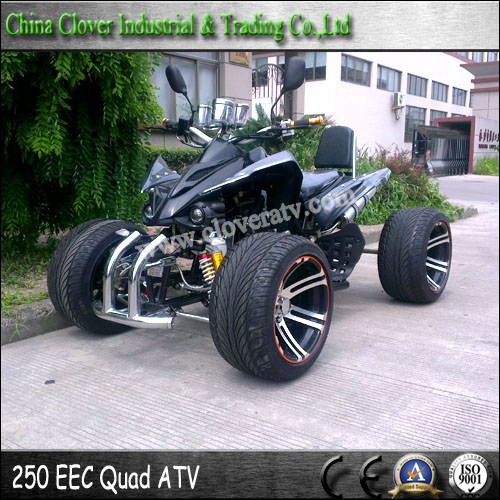Many of Wisconsin’s rural roads are open to off-highway vehicles. Approved roads statewide, designated as ATV Routes, are open to many types of OHVs including UTVs and side-by-sides. However, it is impossible to register a UTV in Wisconsin as a regular street legal vehicle for reasons discussed below.
It is possible to make a UTV street legal in Wisconsin by registering in another state. The resulting title, registration, and license plate will allow you to drive your side-by-side on roads, highways, and city streets in Wisconsin and beyond.
This page covers street legal UTVs in Wisconsin from top to bottom including relevant laws, details about OHV areas, and times when UTVs that are not registered as street legal can be driven on local roads. There’s a lot to cover here, so feel free to skip to what you’re looking for!
Registering out of state lets you use roads besides ATV Routes. You can also cross state lines. Dirt Legal makes it easy to register in other states. Click to learn more.
We have made our best effort to include all relevant details, but something we did not cover might apply to your situation. We are enthusiasts, not attorneys. This is not legal advice.
Contents
Registering a UTV as a regular street legal vehicle
Driving street legal UTVs registered out of state
Using Wisconsin’s OHV areas
Driving a UTV on Wisconsin ATV Routes
How Wisconsin defines off-highway vehicles
Laws, Codes, and Other Resources
Vehicle must be registered as an OHV with Wisconsin – nonresidents must also register
Drivers born on or after 1/1/1988 must pass a Wisconsin ATV Safety Course
Occupants younger than 18 must wear helmets
Auxiliary lights and nonstandard lighting colors usually can’t be used on-road
Vehicle exhaust must not exceed 96 dB(A)
Vehicle width cannot exceed 65”
instagram.com/p/CBw1KYMJZQI/?utm_source=ig_embed&utm_campaign=loading" data-instgrm-version="14">View this post on Instagram
A post shared by Badgers Off Road (@badgersoffroad)
Wisconsin allows local jurisdictions like towns, cities, and counties to designate public roads as ATV Routes. These roads are open to many types of off-highway vehicles including UTVs and side-by-sides. To use ATV Routes, qualifying vehicles need to obtain restricted-use license plates by registering with Wisconsin as an off-highway vehicle.
We will explore ATV Routes later on, but for the purpose of this section, the existence of such a wide-reaching program means Wisconsin has a high level of awareness about UTVs and side-by-sides and will not register them as regular street legal passenger vehicles regardless of what parts are installed.
Registering as a regular street legal vehicle through the Wisconsin DMV would also involve finding a category in the Wisconsin Motor Vehicle Code to register under, but none of the possible categories will accommodate a typical UTV.
Motorcycles cannot have more than 3 wheels and must have handlebars and straddle seating
Autocycles must have 3 wheels and be manufactured to meet federal motorcycle safety standards (49 CFR 571)
Low-Speed Vehicles must meet federal LSV standards including a top speed between 20 and 25 MPH (49 CFR 571.3 and 49 CFR 571.500)
Off-Road Utility Vehicles are owned or contracted by the government for uses like landscaping and waste disposal
Commercial Quadricycles are more commonly known as pedal pubs
Want to see the laws for yourself? Additional resources used to reach these conclusions are linked in the Laws, Codes, and Other Resources section below.
Wisconsin’s endless miles of OHV trails make the state a popular destination for off-roaders across the United States and beyond, but the vast distances between trails can be problematic for getting the most out of a day’s sunlight, especially when you have to load up the tow rig to use roads that aren’t ATV Routes.
The Wisconsin ATV/UTV Regulation Handbook (PDF) states that “There is no residential access allowance that permits you to ride on a roadway from a dwelling to the nearest trail or route. You will need to haul your machine to the nearest legal access point” if a designated ATV Route does not connect you to it. This can easily turn into a serious hurdle, but there is a way to gain more freedom on the road in Wisconsin.
In states like Montana and South Dakota, the vehicle code allows UTVs to be registered as street legal vehicles. You can register your UTV in those states without ever leaving your home. Once registration is complete and the required equipment is installed, your UTV will be street legal in Wisconsin with an out-of-state registration (see How to Make Your UTV Street Legal).
Imagine driving your UTV for the entire journey without needing a truck and trailer to get you there. Take the family on the winding coulee roads to the Eau Galle Cheese Factory, take a day trip into the U.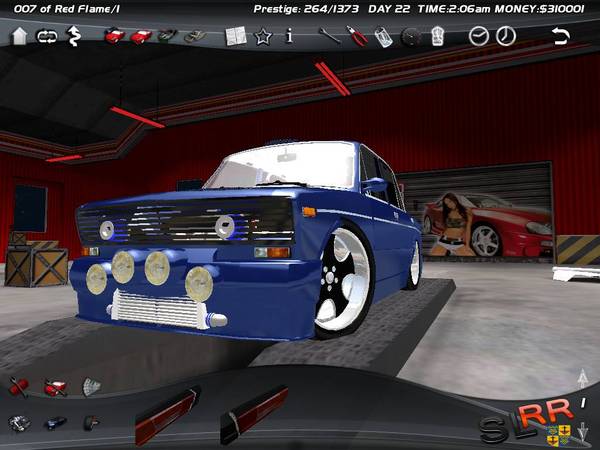 P., ride the highways connecting the many trails of Iron County, or pop down to Madison for dinner by the lake. Which lake? Your call.
P., ride the highways connecting the many trails of Iron County, or pop down to Madison for dinner by the lake. Which lake? Your call.
If you can weather the coldest winter storm but shiver at the thought of DMV paperwork, let our team of experts register your UTV as street legal on your behalf while you plan your next great adventure.
View this post on Instagram
A post shared by Brian Holzhausen - Wisconsin (@racer787)
The only way to make a UTV street legal in Wisconsin across the board is to register in another state, a process that doesn’t involve any parts specific to Wisconsin. Parts required for ATV Routes and road use of other UTVs are listed in a later section.
Thanks to reciprocity agreements between states, a vehicle only needs to have the parts required by the state where it is registered. That means a UTV with an out-of-state registration can be driven on Wisconsin roads without needing any equipment required by Wisconsin and without needing to pass a Wisconsin inspection.
That means a UTV with an out-of-state registration can be driven on Wisconsin roads without needing any equipment required by Wisconsin and without needing to pass a Wisconsin inspection.
There are also some parts we suggest leaving off which are rarely allowed on street legal vehicles in any state.
GET STREET LEGAL PARTS ON GRITSHIFT
Wisconsin vehicle registration reciprocity statute (excerpt)
Because street legal UTVs are a small niche, local law enforcement may not know that a UTV can be made street legal in Wisconsin by registering out of state. While we are not attorneys, we always suggest carrying physical copies of your UTV’s registration and insurance proofs and being knowledgeable about the ways your vehicle is legal for road use (see Knowing Your Legality).
Vehicles licensed in other states can be driven legally in Wisconsin thanks to registration reciprocity agreements between states. Wisconsin’s registration reciprocity statute is linked in the resources below. You should not need to worry about title transfer windows if you maintain residency in another state or your UTV is registered to an LLC in another state. In some cases, it might not be possible to transfer your registration to Wisconsin from another state because of vehicle type mismatches between states.
Wisconsin’s registration reciprocity statute is linked in the resources below. You should not need to worry about title transfer windows if you maintain residency in another state or your UTV is registered to an LLC in another state. In some cases, it might not be possible to transfer your registration to Wisconsin from another state because of vehicle type mismatches between states.
In considering whether helmets would be required for a vehicle registered out of state, since Wisconsin has such a significant street legal program of its own, it would be best to follow that program’s requirement of DOT helmets with fastened chin straps for occupants younger than 18. The same is required for any UTV operated in off-road locations like OHV areas, trails, and public lands.
It is also worth noting that Wisconsin requires motorcycle and autocycle riders younger than 18 to wear helmets (and all riders with instructional permits). Additionally, all riders must wear eye protection like glasses, goggles, or transparent face shields. The eye protection requirement is waived for autocycles with windshields and for motorcycles where the windshield extends more than 15” above the handlebars, but a street legal UTV does not fit Wisconsin’s definition of an autocycle or a motorcycle.
The eye protection requirement is waived for autocycles with windshields and for motorcycles where the windshield extends more than 15” above the handlebars, but a street legal UTV does not fit Wisconsin’s definition of an autocycle or a motorcycle.
For safety reasons, we recommend helmets for all occupants while driving a street legal UTV on public roads. Keep in mind that helmet laws need to be followed on a state-by-state basis. Before you travel, learn the helmet situation in any state you plan to drive in. See other states
Whenever you drive off-road in places like OHV areas, trails, and public lands, your UTV will be considered an off-highway vehicle even if it is registered as street legal.
The Wisconsin ATV/UTV Regulation Handbook (PDF) covers everything you need to know about OHVs in Wisconsin
Visit Wisconsin DNR: ATV and UTV Registration to get an OHV registration for your vehicle
You will not need to register your OHV with Wisconsin if it will only be in the state during the first full weekend in June
Any UTV operated as an OHV in Wisconsin is required to have a Forest Service-qualified spark arrester and a good working muffler with a maximum volume of 96 dB(A). Other basic equipment is required like working lights and brakes. Street legal or not, all OHVs are subject to the statewide restrictions on auxiliary lighting explained below. Occupants younger than 18 are required to wear helmets in OHV areas. In Wisconsin, a UTV’s width cannot exceed 65” from the factory or through aftermarket modifications.
Other basic equipment is required like working lights and brakes. Street legal or not, all OHVs are subject to the statewide restrictions on auxiliary lighting explained below. Occupants younger than 18 are required to wear helmets in OHV areas. In Wisconsin, a UTV’s width cannot exceed 65” from the factory or through aftermarket modifications.
Individual OHV areas within Wisconsin often have their own requirements regarding equipment, engine size restrictions by rider age, helmets, or other factors, so be sure to check ahead when you plan to travel.
Whether your UTV is street legal or not, if you plan to operate as an off-highway vehicle in Wisconsin you must obtain an OHV Registration through Wisconsin and display the corresponding decals and rear license plate on your UTV.
If your UTV is street legal with an out-of-state registration, or if you are not a resident of Wisconsin, you can choose to get either a 5-day Trail Pass or a 1-year Nonresident OHV Registration from Wisconsin. If you store your vehicle in Wisconsin but are a nonresident, you will need to obtain a Wisconsin registration because of a specific law requiring in-state registration in this circumstance.
If you store your vehicle in Wisconsin but are a nonresident, you will need to obtain a Wisconsin registration because of a specific law requiring in-state registration in this circumstance.
Registrations can be obtained online through the Wisconsin DNR, by mail after completing Application Form 9400-376 (PDF), in person at a DNR Service Location, or at any commercial ATV/UTV dealer in Wisconsin. If you register online or in person you can get a temporary registration instantly.
Wisconsin allows you to design and build your own license plate for an off-highway vehicle. Learn more at Wisconsin DNR: ATV and UTV Registration under the section “Display of Decals and Rear Registration Plate.”
Wisconsin refers to most OHVs using the umbrella term “ATV.” You will see the term ATV used by local OHV areas and on local signage, and unless otherwise stated that information also applies to UTVs and side-by-sides. Most of Wisconsin’s ATV trails are open to UTVs unless they are marked otherwise or limited by width but be sure to double-check this before you hit the road.
Most of Wisconsin’s ATV trails are open to UTVs unless they are marked otherwise or limited by width but be sure to double-check this before you hit the road.
Drivers born on or after 1/1/1988 must pass a Wisconsin ATV Safety Course to operate a UTV or other off-highway vehicle on ATV Routes, trails, public lands, and other off-road riding areas throughout the state.
View this post on Instagram
A post shared by Jeff McCabe (@nowheresville_)
Hey! This section is about UTVs that have not been made street legal through the means described above.
This section is about vehicles that do not have street legal registrations.
Wisconsin’s robust off-highway vehicle program allows towns, cities, and other local jurisdictions to designate public roads as ATV Routes.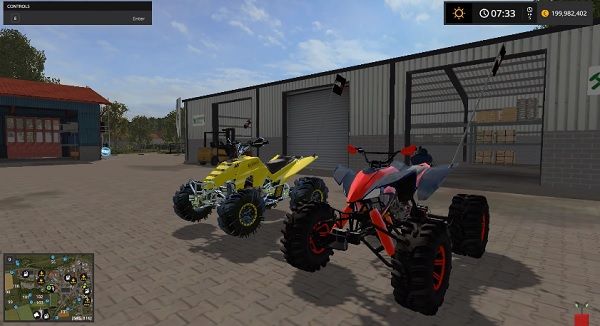 Though the name implies these roads are just for conventional ATVs with handlebars, they are open to UTVs and other off-highway vehicles as well.
Though the name implies these roads are just for conventional ATVs with handlebars, they are open to UTVs and other off-highway vehicles as well.
OHVs in Wisconsin are also allowed on seasonally maintained roads when maintenance is not occurring and can use roads and shoulders for the express purpose of crossing a bridge, culvert, or railroad. Crossing requirements are detailed below.
Outside of these circumstances, OHVs cannot be operated on shoulders, ditches, or any public road that is not designated for OHV use. OHVs are never allowed on interstate highways in Wisconsin.
We’ve done our best to cover the most important elements of this program in the following sections, but there is a lot that goes beyond the scope of this guide. Thankfully, there is the wonderful Wisconsin ATV/UTV Regulation Handbook (PDF) that should answer any other questions you have about OHVs in Wisconsin.
Approved roads and sections are marked with prominent green signage featuring a white ATV and an arrow indicating the route’s direction, along with additional signage at the beginning and end of each route.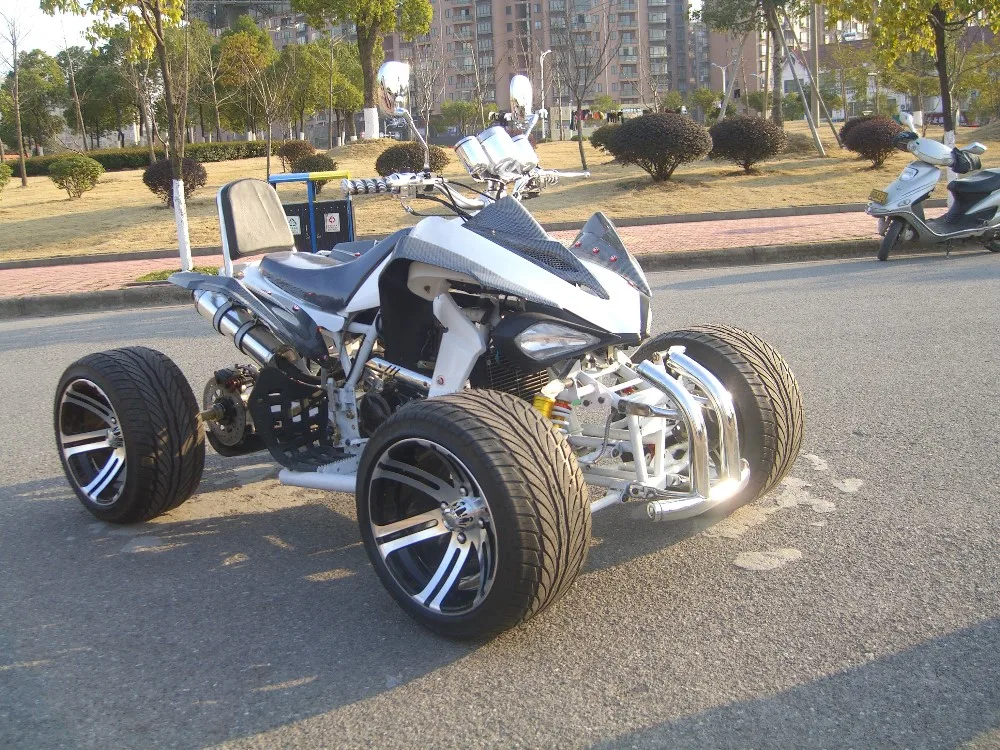 Approval can apply to just a few miles of a given road or the entire road from beginning to end, or every road in a town, or anything in between.
Approval can apply to just a few miles of a given road or the entire road from beginning to end, or every road in a town, or anything in between.
At the time of writing this guide, there is no official source listing which roads an OHV can drive on in Wisconsin. Several official and independent websites claim to show the state’s ATV Routes, but we have yet to find one that is accurate and up to date. Some of them even tell you that contacting the county directly is the only way to get accurate information.
Your best bet is to start by contacting someone in the area you plan to drive in. Contact a local DMV, OHV area, ATV club, or local law enforcement and ask if they can provide a localized ATV Route Map. Ask if any towns and cities have different road rules you need to know about. Here are some resources to get you started:
Official contact information for every county in Wisconsin
Wisconsin ATV and UTV Association: List of local ATV clubs
Discrepancies have been known to develop when online maps are not updated in a timely manner. In 2020 in Breckenridge, Colorado, Youtubers Our Keen Life were pulled over for driving on what an online map claimed to be an approved OHV route, only to discover the map had not been updated and the road was not actually approved.
In 2020 in Breckenridge, Colorado, Youtubers Our Keen Life were pulled over for driving on what an online map claimed to be an approved OHV route, only to discover the map had not been updated and the road was not actually approved.
We found this to be especially relevant in Wisconsin because none of the resources linked below seem to list the same ATV Routes. Our advice is to use the following resources for general information and contact someone on the local level before you put wheels on the ground. Please contact us if a better resource becomes available.
Official Wisconsin Cartographer’s Office ATV trail map resources
Official Wisconsin Department of Tourism ATV Travel Guide
Wisconsin ATV and UTV Association: Statewide Trail Map and Trails by County
Northwest Wisconsin: ATV and snowmobile corridors map
TrailLink Wisconsin: ATV Trails and Maps (Registration required for extended use)
ATV-WI.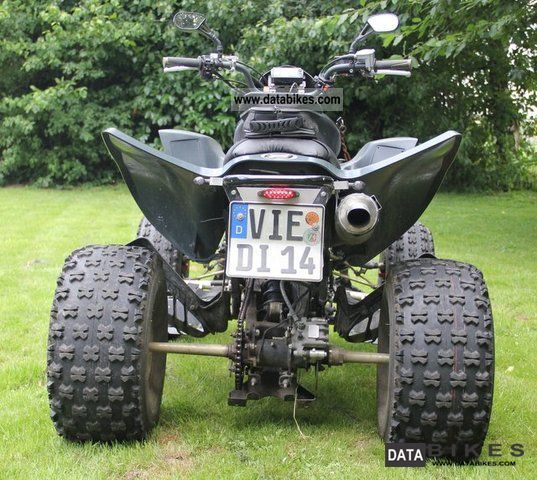 com: List of local ATV maps (Note: Page has some suspicious links)
com: List of local ATV maps (Note: Page has some suspicious links)
View this post on Instagram
A post shared by MJ Grimm (@mjmgrimm)
As stated in the Wisconsin ATV/UTV Regulation Handbook (PDF), “There is no residential access allowance that permits you to ride on a roadway from a dwelling to the nearest trail or route. You will need to haul your machine to the nearest legal access point” if an approved ATV Route does not connect you to it. With that said, we called the Wisconsin DMV and were told that many small towns are lenient toward OHVs while cities tend not to be, so your mileage may vary.
Off-highway vehicles driving on designated Wisconsin ATV Routes must follow these rules:
Drive only at the extreme right side of the road surface
Drive only in a single-file line
Do not pass other moving vehicles including other OHVs
Make left turns only when legal and safe to do so
Use hand signals for stopping and turning if vehicle does not have signals
Ensure passengers do not hang off the vehicle or ride in aftermarket seating
Always keep headlights and taillights turned on
Other restrictions, equipment requirements, and limited hours of operation may vary between localities, so be sure to check ahead when you plan to travel.
All off-highway vehicles driven on public roads in Wisconsin are required to obtain a Wisconsin OHV Registration from the state. Registrations can be obtained online through the Wisconsin DNR, by mail after completing Application Form 9400-376 (PDF), in person at a DNR Service Location, or at any commercial ATV/UTV dealer in Wisconsin. If you register online or in person you can get a temporary registration instantly.
Wisconsin allows you to design and build your own OHV license plate at the time of registration. Learn more at Wisconsin DNR: ATV and UTV Registration under the section “Display of Decals and Rear Registration Plate.”
Drivers born on or after 1/1/1988 must pass a Wisconsin ATV Safety Course to operate a UTV or other off-highway vehicle on ATV Routes, trails, public lands, and other off-road riding areas throughout the state.
To use public roads and ATV Routes in Wisconsin, a UTV must have been originally manufactured with this equipment:
Two headlights
At least one taillight
At least one brake light
Seat belts at each seat
Rollover protection
Working brakes
Additionally, all UTVs must meet the following requirements:
Forest Service approved spark arrester and a muffler with a maximum volume of 96 dB(A)
Width cannot exceed 65 inches from the factory or through aftermarket modifications
All OHVs are subject to statewide auxiliary lighting restrictions explained below
Occupants younger than 18 must wear helmets both on and off-road
View this post on Instagram
A post shared by Oconto County Tourism (@oconto_county)
Wisconsin requires all off-highway vehicles to meet following lighting requirements:
Forward-facing lights can only be white
Rear-facing lights can only be red, yellow, amber, or white
Flashing, oscillating, or rotating lights can only be yellow or amber
Front high beams and extra driving lights must be dimmed when meeting traffic
No more than 4 front-facing lights can be used within 500 feet of oncoming traffic
Reverse lights cannot remain on while driving forward
No more than 2 lights can be used for reversing
Though these laws are written for OHVs that are not street legal, given their specific nature and the popularity of OHVs on public roads in Wisconsin, you can expect them to be enforced for street legal UTVs registered out of state as well. The exact wording can be found throughout the Wisconsin ATV/UTV Regulation Handbook (PDF), mostly in sections 24 and 25.
The exact wording can be found throughout the Wisconsin ATV/UTV Regulation Handbook (PDF), mostly in sections 24 and 25.
When driving on a trail next to a roadway, the vehicle must always stay at least 10 feet from the road. OHVs can travel with or against the flow of traffic on these trails during daylight, but at night they must travel with the flow of traffic if using a trail within 40 feet of the road unless the two are separated by a barrier.
OHVs in Wisconsin may cross public roads including those that are not ATV Routes. Crossings must be done at a safe location in the most direct manner possible, after coming to a complete stop and yielding to traffic. Roads can also be used to cross bridges, culverts, and railroads. Bridges crossed in this manner must be 1,000’ or less in length and there must be a local ordinance permitting this action. Other details are often determined by local ordinances, so be sure to check ahead.
UTVs and other off-highway vehicles used for certain industrial purposes like agriculture and farming may qualify for expanded road use permissions. Refer to the Wisconsin ATV/UTV Regulation Handbook (PDF) or contact the DMV or local law enforcement to learn more.
View this post on Instagram
A post shared by Oconto County Tourism (@oconto_county)
Note: These definitions changed in 2020 as described in Wisconsin ATV and UTV Law Changes Effective March 4, 2020 (PDF).
Wisconsin defines a Small All-Terrain Vehicle as one with:
Wisconsin defines an All-Terrain Vehicle as one with:
Width of 50” or less (wheel to wheel)
Dry weight of 900 lbs.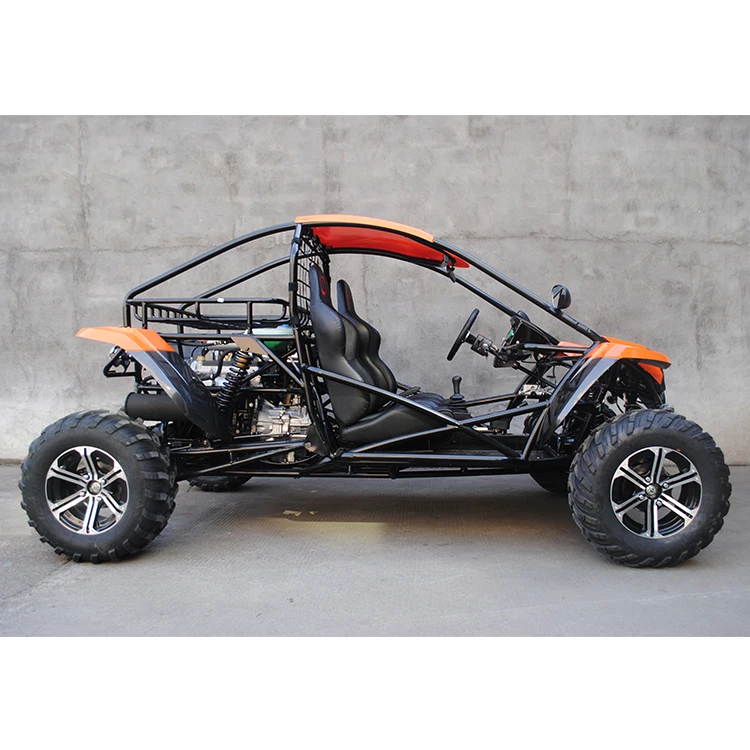 or less
or less
Three or more tires
Straddle seating
Commercially designed and manufactured
Wisconsin defines a Utility Terrain Vehicle as one originally manufactured with:
Width of 65” or less (wheel to wheel)
Dry weight of 3,000 lbs. or less
Four or more tires
Steering wheel
Two headlights
At least one taillight
At least one brake light
Seat belts for each seat
Rollover protection
Commercially designed and manufactured
Does not meet federal motor vehicle safety standards
Is not a golf cart, dune buggy, mini-truck, or tracked vehicle
Is designed primarily for off-road use
Alternatively, a Utility Terrain Vehicle can be any vehicle with three or more wheels with straddle seating and measuring 65” or less in width that does not qualify as an All-Terrain Vehicle.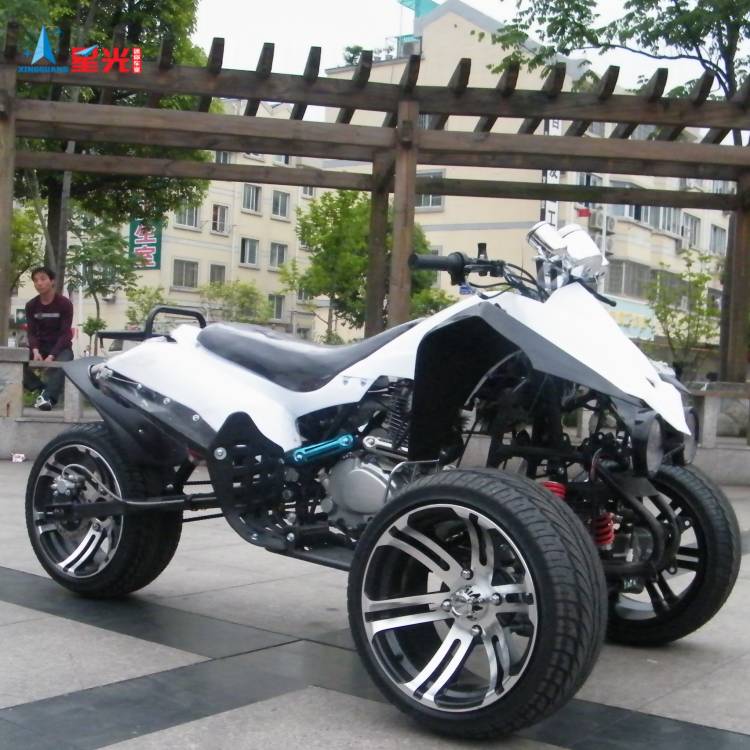
This guide focuses on vehicles classified as Utility Terrain Vehicles. Although Wisconsin generally refers to all three categories with the blanket term ATV, vehicles fitting the other two categories sometimes follow different rules as detailed in the Wisconsin ATV/UTV Regulation Handbook (PDF).
• • •
View this post on Instagram
A post shared by Hunter (@canam_hunter)
Hey! This page is part of our Nationwide Street Legal UTV Guide which covers all 50 states plus Washington, D.C. and five US territories. It also covers in-depth topics like registration, insurance, and what to do if you get pulled over. Check it out to learn all about street legal UTVs!
For questions outside the scope of this guide, try:
Wisconsin DOT Division of Motor Vehicles
Wisconsin Department of Natural Resources
Wisconsin Department of Tourism
Wisconsin Cartographer’s Office
Official list of Wisconsin counties and contact information
Wisconsin ATV and UTV Association and their list of local ATV clubs
These are the sources we used to create this guide. If you find any inaccurate or outdated information, please contact us and we will be happy to address it.
If you find any inaccurate or outdated information, please contact us and we will be happy to address it.
Wisconsin ATV/UTV Regulation Handbook (PDF)
Wisconsin DNR: ATV and UTV Registration
Wisconsin DNR: ATV Safety Courses
Wisconsin DOT: ATV and UTV Road Use Guide
Wisconsin Statutes Chapter 23 Section 33 (Conservation statutes pertaining to OHVs)
Wisconsin Statute 23.33.2 (Registration, exemptions)
Wisconsin Statute 23.33.3g (OHV helmet law)
Wisconsin Statute 23.33.6 (Equipment requirements)
Wisconsin Statute 23.33.6m (Noise limits)
Wisconsin Statute 23.33.4d (Road use)
Wisconsin Statute 23.33.8 (Routes and trails)
Wisconsin ATV/UTV Law Changes Effective March 4, 2020 (PDF)
Wisconsin Statute 23.33.1.ng (Definition of a Utility-Terrain Vehicle)
Wisconsin Statute 340.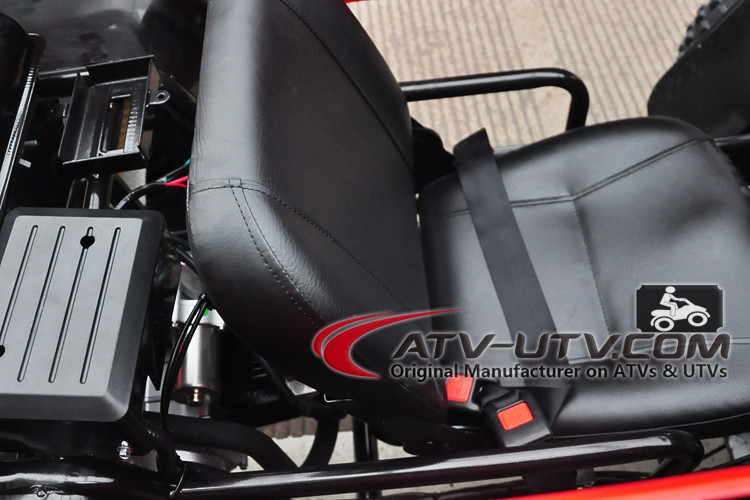 01 (Definitions of various vehicles, highway)
01 (Definitions of various vehicles, highway)
Wisconsin Statute 341.40 (Wisconsin vehicle registration reciprocity)
Wisconsin Statute 346.94(19) (Off-Road Utility Vehicles)
Wisconsin Statute 347.485 (Wisconsin motorcycle helmet law)
Wisconsin Statutes
READ LESS, RIDE MORE.
Our expert team can register your UTV as street legal while you’re out riding.
Continuing in our series of articles analyzing the ATV laws in every state, which stemmed from this article, we are addressing the ATV laws in Wisconsin in this article. It should also be noted that, while I am an attorney, I am not your attorney, not licensed in Wisconsin and am not giving legal advice. If you have questions, you should consult a local attorney.
Wisconsin defines an ATV or All-Terrain Vehicle as “a commercially designed and manufactured motor-driven device that has a weight, without fluids, of 900 pounds or less, has a width of 50 inches or less, is equipped with a seat designed to be straddled by the operator and on 3 or more low-pressure or non-pneumatic tires.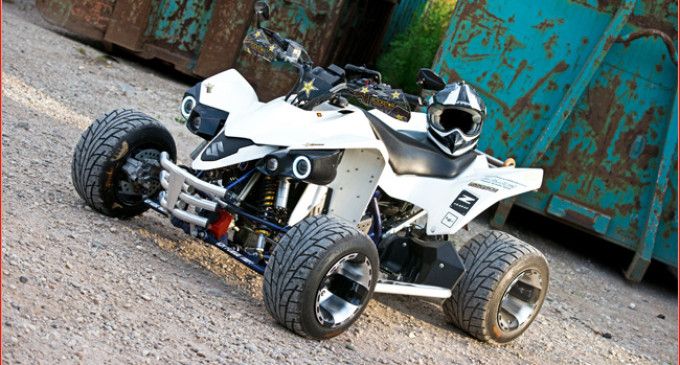 ” Note, Wisconsin also defines a separate category of ATVs as “small all-terrain vehicles.” The definition of a small ATV is “an all-terrain vehicle that has 4 wheels and that has either an engine certified by the manufacturer at not more than 130 cubic centimeters or an equivalent power unit.” To get an idea for what ATVs fit into Wisconsin’s definitions, check out these guides to ATV Weight and ATV Dimension. Small Utility Terrain Vehicle—means a utility terrain vehicle that has 4 wheels and that has either an engine certified by the manufacturer at not more than 200 cubic centimeters or an equivalent power unit. Wisconsin defines a UTV or Utility Terrain Vehicle as “a commercially designed and manufactured motor driven device that does not meet federal motor vehicle safety standards in effect on July 1, 2012, that is not a golf cart, low-speed vehicle, dune buggy, mini-truck, or tracked vehicle, that is designed to be used primarily off of a highway, and that has, and was originally manufactured with, all of the following:
” Note, Wisconsin also defines a separate category of ATVs as “small all-terrain vehicles.” The definition of a small ATV is “an all-terrain vehicle that has 4 wheels and that has either an engine certified by the manufacturer at not more than 130 cubic centimeters or an equivalent power unit.” To get an idea for what ATVs fit into Wisconsin’s definitions, check out these guides to ATV Weight and ATV Dimension. Small Utility Terrain Vehicle—means a utility terrain vehicle that has 4 wheels and that has either an engine certified by the manufacturer at not more than 200 cubic centimeters or an equivalent power unit. Wisconsin defines a UTV or Utility Terrain Vehicle as “a commercially designed and manufactured motor driven device that does not meet federal motor vehicle safety standards in effect on July 1, 2012, that is not a golf cart, low-speed vehicle, dune buggy, mini-truck, or tracked vehicle, that is designed to be used primarily off of a highway, and that has, and was originally manufactured with, all of the following:

Similar to small ATVs, Wisconsin also has a separate designation for small UTVs. A Small Utility Terrain Vehicle is defined as “a utility terrain vehicle that has 4 wheels and that has either an engine certified by the manufacturer at not more than 200 cubic centimeters or an equivalent power unit.” To get an idea for what UTVs fit into Wisconsin’s definitions, check out these guides to UTV Weight and UTV Dimension.
You are required to register your ATV as an ATV and your UTV as a UTV if you plan to ride on any public land in Wisconsin. Registration must be completed within 10 days of the purchase of the ATV or UTV. If you purchased from a dealer, they have 5 days to submit the registration. Note that, should your ATV meet all the definition of an ATV except it is too heavy and/or wide, it can be registered as a UTV. Small ATVs and UTVs must also be registered. Upon registering your ATV or UTV, you will received a temporary operating receipt that you must carry with you while riding until you receive, by mail, your two registration decals. You are required to display a decal on each side of your ATV or UTV, in front of the operator, in a place where they are visible to law enforcement.
Registration must be completed within 10 days of the purchase of the ATV or UTV. If you purchased from a dealer, they have 5 days to submit the registration. Note that, should your ATV meet all the definition of an ATV except it is too heavy and/or wide, it can be registered as a UTV. Small ATVs and UTVs must also be registered. Upon registering your ATV or UTV, you will received a temporary operating receipt that you must carry with you while riding until you receive, by mail, your two registration decals. You are required to display a decal on each side of your ATV or UTV, in front of the operator, in a place where they are visible to law enforcement.
The only exception to this registration requirement for non-exempt vehicles is the first full weekend every June, when you are free to ride ATVs and UTVs without complying with the registration and trail pass requirements.
If you qualify, you may register your ATV or UTV under Private Use, Agricultural.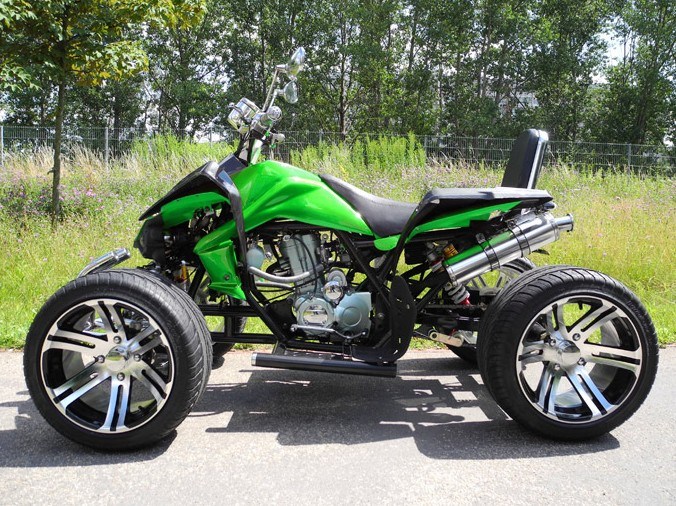 This registration costs $15 and lasts until ownership of the ATV or UTV is transferred. You may only take advantage of this registration option if your ATV or UTV is used for an agricultural purpose. Agricultural purpose is defined as “a purpose related to the transportation of farm implements, equipment, supplies, or products on a farm or between farms. This form of registration is valid during operation on public roads for agricultural purposes, but is not valid for operation on public, frozen waterways or public lands otherwise open to ATVs/UTVs. If you want to use your ATV or UTV recreationally as well, you may dual register it for public use also. You may also register an ATV or UTV under Private Use, Non-Agricultural. This form of registration is available if you use your ATV or UTV exclusively on private property owned by you or an immediate family member. Like the agricultural registration, this registration also costs $15 and remains valid until ownership of the ATV or UTV is transferred.
This registration costs $15 and lasts until ownership of the ATV or UTV is transferred. You may only take advantage of this registration option if your ATV or UTV is used for an agricultural purpose. Agricultural purpose is defined as “a purpose related to the transportation of farm implements, equipment, supplies, or products on a farm or between farms. This form of registration is valid during operation on public roads for agricultural purposes, but is not valid for operation on public, frozen waterways or public lands otherwise open to ATVs/UTVs. If you want to use your ATV or UTV recreationally as well, you may dual register it for public use also. You may also register an ATV or UTV under Private Use, Non-Agricultural. This form of registration is available if you use your ATV or UTV exclusively on private property owned by you or an immediate family member. Like the agricultural registration, this registration also costs $15 and remains valid until ownership of the ATV or UTV is transferred.
After you register your ATV or UTV in Wisconsin, you are required to attach a license plate to the rear of the ATV or UTV, unless your obtained a private registration. Unfortunately, this plate is not included with your registration, and you must either construct your own plate or purchase one. The license plate must be at least 4 inches high and 7 1/2 inches wide. It must be white in color and display in black characters the four-number and two-letter registration ID you were issued for the ATV or UTV. The characters must be at least 1.5 inches high with a minimum brush stroke of 3/16 of an inch wide.
If you are not a Wisconsin resident, you either need to obtain a valid Public Use registration for your ATV or UTV, or you will need to obtain and display a non-resident trail pass. When you purchase an annual trail pass, you will receive a temporary operating receipt that you must carry with you to operate your ATV or UTV in Wisconsin until you receive the trail pass decal, which should arrive by mail in 2 weeks or less.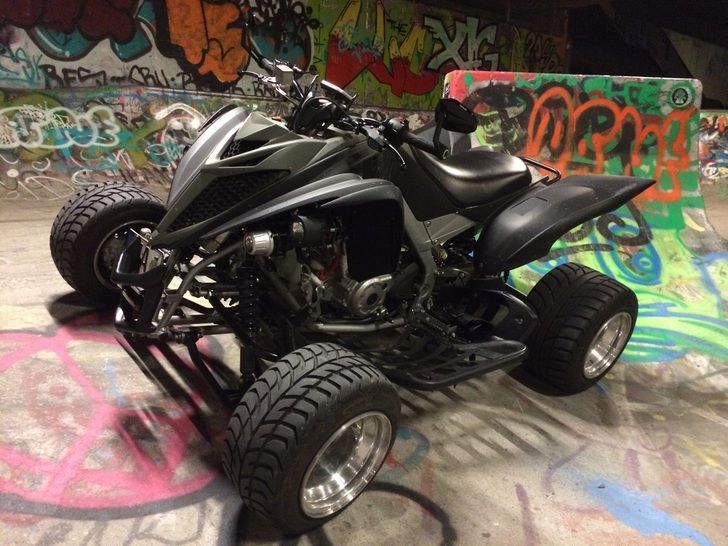 The annual trail pass expires each year on March 31, regardless of when it was purchased. You may purchase the annual trail pass online, at select authorized sales locations or by calling WDNR at 1-888-WDNRINFo (1-888-936-7463). If you do not want to purchase an annual trail pass, you may choose the 5-day Trail Pass. This pass must be printed from your computer or the Go Wild location where it is purchased. You must carry the pass with you whenever you are operating your ATV or UTV in Wisconsin during the 5 days. You do not receive a sticker or decal with the 5-day pass. Note, you do not need a license plate if you are operating with an trail pass instead of a registration.
The annual trail pass expires each year on March 31, regardless of when it was purchased. You may purchase the annual trail pass online, at select authorized sales locations or by calling WDNR at 1-888-WDNRINFo (1-888-936-7463). If you do not want to purchase an annual trail pass, you may choose the 5-day Trail Pass. This pass must be printed from your computer or the Go Wild location where it is purchased. You must carry the pass with you whenever you are operating your ATV or UTV in Wisconsin during the 5 days. You do not receive a sticker or decal with the 5-day pass. Note, you do not need a license plate if you are operating with an trail pass instead of a registration.
When you change your address, you must submit written notification within 15 days to DNR. The notification must include your new address and the certificate number for the ATV or UTV you own. This process can also be accomplished by changing your address in your GoWild account information.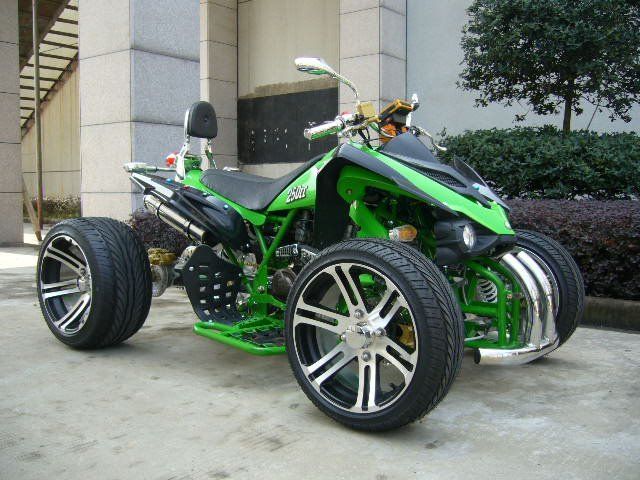
Other ATV and UTV registration exemptions in Wisconsin include the following:
The following regulations apply for youth operation of ATVs and/or UTVs in Wisconsin:
 Said operators must have the safety certificate in their possession while operating in areas open to the public such as trails, routes and frozen waterways. Note, the popular ATV Safety Institute (ASI) and Recreational Off-Highway Vehicle Association (ROVHA) certificates are not valid in Wisconsin. The only valid safety certificate must be obtained by completing a classroom course or an Internet course offered by www.atvcourse.com and www.offroad-ed.com. Prior to enrolling in a safety class, you must obtain a DNR Customer ID number using the DNR website, calling 1-888-936-7463 or visiting a DNR service center.
Said operators must have the safety certificate in their possession while operating in areas open to the public such as trails, routes and frozen waterways. Note, the popular ATV Safety Institute (ASI) and Recreational Off-Highway Vehicle Association (ROVHA) certificates are not valid in Wisconsin. The only valid safety certificate must be obtained by completing a classroom course or an Internet course offered by www.atvcourse.com and www.offroad-ed.com. Prior to enrolling in a safety class, you must obtain a DNR Customer ID number using the DNR website, calling 1-888-936-7463 or visiting a DNR service center.
There are a number of exceptions to the safety certificate requirements in Wisconsin. A safety certificate is not required in the following circumstances:

As discussed above, you may register your ATV or UTV for private use, agricultural. This registration requires the ATV or UTV be used only for agricultural purposes, which means “a purpose related to the transportation of farm implements, equipment, supplies, or products on a farm or between farms.” Note that operation between a dwelling and a farm or piece of non-agricultural property does not meet an agricultural purpose unless the dwelling is on the same piece of property as the farm. The following regulations apply to ATVs and UTVs registered for private use, agricultural:
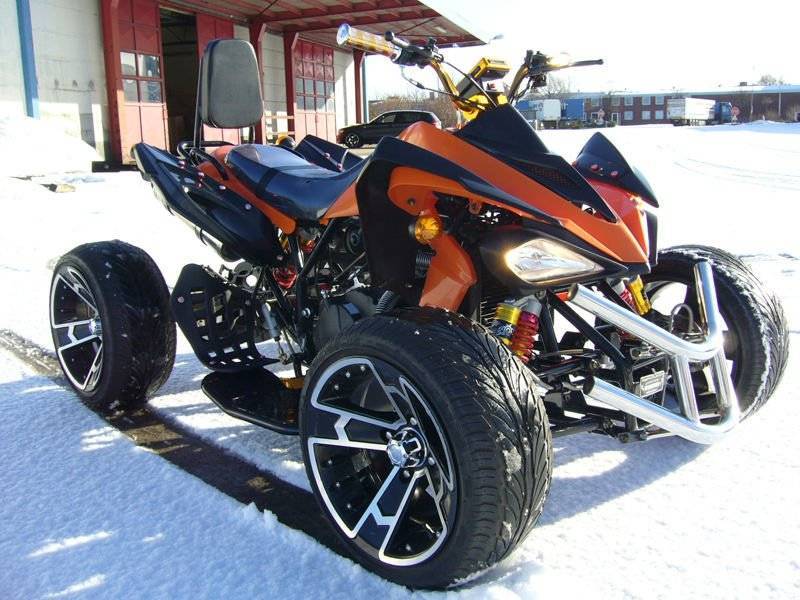
Most ATV and UTV trail riding opportunities in Wisconsin are located on County owned land, with some also available on State and Federal lands. Generally, ATV and UTV operation is strictly restricted to designated and marked ATV trails and routes only. Marked ATV Trails in Wisconsin are generally open to UTV operation unless specifically marked as closed to UTVs. ATV trails in Wisconsin are identified by small (6”x6”) brown signs with the white silhouette of an ATV and orange blazer (diamond) signs. An ATV trail will generally never be on a road or in a ditch, whereas an ATV route may be. You may encounter some trails that are designated as multiple use trails. These trails typically permit horses, motorcycles, ATVs, UTVs and bicyclists. Unlike an ATV trail, an ATV Route is a public roadway that is designated as being open to legal ATV and UTV use. Routes are designated through passage of a local ordinance and posted with ATV Route (24”x 18”) green signs with the white silhouette of an ATV along with appropriate directional arrows. All roads designated as ATV Routes must be signed at the beginning and end of a route and at such intervals that enable riders to follow the route.
Generally, ATV and UTV operation is strictly restricted to designated and marked ATV trails and routes only. Marked ATV Trails in Wisconsin are generally open to UTV operation unless specifically marked as closed to UTVs. ATV trails in Wisconsin are identified by small (6”x6”) brown signs with the white silhouette of an ATV and orange blazer (diamond) signs. An ATV trail will generally never be on a road or in a ditch, whereas an ATV route may be. You may encounter some trails that are designated as multiple use trails. These trails typically permit horses, motorcycles, ATVs, UTVs and bicyclists. Unlike an ATV trail, an ATV Route is a public roadway that is designated as being open to legal ATV and UTV use. Routes are designated through passage of a local ordinance and posted with ATV Route (24”x 18”) green signs with the white silhouette of an ATV along with appropriate directional arrows. All roads designated as ATV Routes must be signed at the beginning and end of a route and at such intervals that enable riders to follow the route.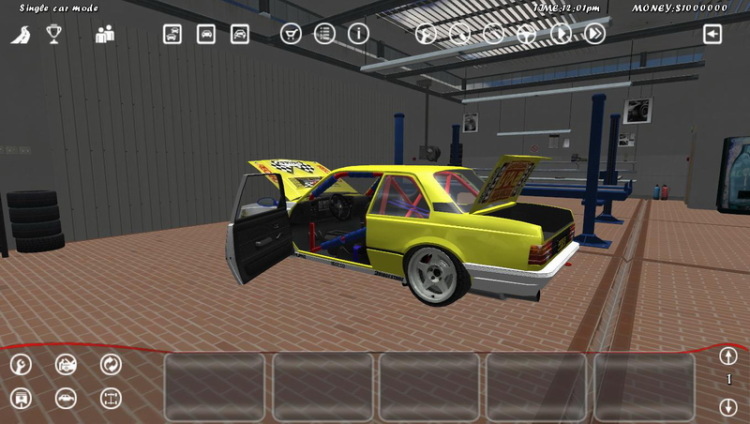 You can find ATV Routes through your local law enforcement agency as ATV Route ordinances must be filed with any law enforcement agencies that have jurisdiction over the roadway. Official copies of all ATV Route ordinances are also filed with the Department of Natural Resources located at: WI DNR ATV Safety Program 101 South Webster Street LE/8 Madison,WI 53707. You will have to haul your ATV or UTV to any route or trail as there is no residential access allowance that permits you to ride on a roadway from your house to a trail or route. When it comes to riding on snowmobile trails in Wisconsin, there is, unfortunately, no state-wide rule to make it easy. Different counties in Wisconsin have different rules for whether or not you can operate ATVs or UTVs on snowmobile trails. That being the case, you should check with your county before you head out to ride on any snowmobile trails. Note, simply adding tracks to an ATV or UTV does not permit you to ride on a snowmobile trail. Also, be careful as snowmobile trails, like ATV trails, are also marked by an orange blazer to mark the pathway of a trail.
You can find ATV Routes through your local law enforcement agency as ATV Route ordinances must be filed with any law enforcement agencies that have jurisdiction over the roadway. Official copies of all ATV Route ordinances are also filed with the Department of Natural Resources located at: WI DNR ATV Safety Program 101 South Webster Street LE/8 Madison,WI 53707. You will have to haul your ATV or UTV to any route or trail as there is no residential access allowance that permits you to ride on a roadway from your house to a trail or route. When it comes to riding on snowmobile trails in Wisconsin, there is, unfortunately, no state-wide rule to make it easy. Different counties in Wisconsin have different rules for whether or not you can operate ATVs or UTVs on snowmobile trails. That being the case, you should check with your county before you head out to ride on any snowmobile trails. Note, simply adding tracks to an ATV or UTV does not permit you to ride on a snowmobile trail. Also, be careful as snowmobile trails, like ATV trails, are also marked by an orange blazer to mark the pathway of a trail.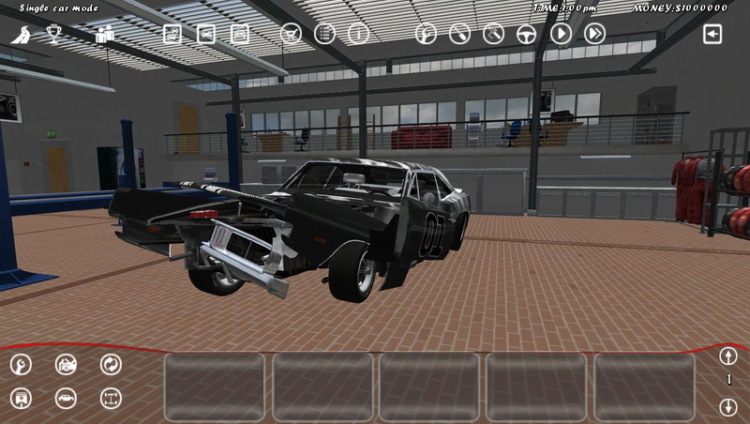 Finally, you are not permitted to operate your ATV or UTV in any navigable water or on the exposed bed of any navigable water (including exposed lake beds) except in the following circumstances:
Finally, you are not permitted to operate your ATV or UTV in any navigable water or on the exposed bed of any navigable water (including exposed lake beds) except in the following circumstances:
Note, “Bed of a navigable water” refers to “all of the area below the ordinary high water mark of a lake or stream.” If you aren’t sure about riding in a location, you should check with local County, State and Federal offices for special regulations. Here are some ideas:
 of Tourism travelwisconsin.com search keyword “ATV”
of Tourism travelwisconsin.com search keyword “ATV”While ATV and UTV use is permitted on designated routes, it is otherwise prohibited on public streets and highways in Wisconsin that have not been designated as Routes. Despite this general prohibition, operation of ATVs and UTVs is permitted on the streets in Wisconsin in the following circumstances:

In situations where you are permitted to operate an ATV or UTV on the street in Wisconsin, you must abide by the following:
Generally, you are not permitted to operate an ATV or UTV on the unimproved right-of-way or ditch on the side of a public street. The exceptions where such operation is permitted are as follows:
The exceptions where such operation is permitted are as follows:
Note that operation of an ATV or UTV is never permitted on the right-of-way or ditch alongside an Interstate Highway. In addition, you should know that when you are legally operating alongside roadways during the hours of darkness, you must ride in the same direction as motor vehicle traffic in the nearest lane unless the trail or route is located at least 40 feet from the roadway or separated by a headlight barrier. When you are riding during the day, you may ride in either direction regardless of the flow of motor vehicle traffic.
The following equipment regulations apply to ATVs and UTVs in Wisconsin:
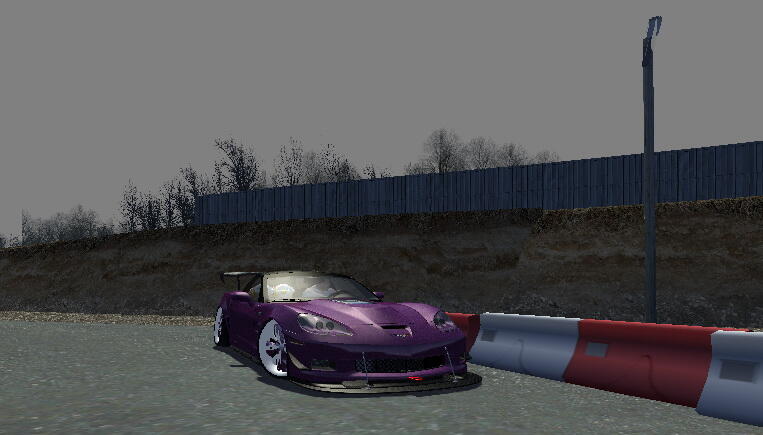
If you are in an ATV or UTV accident in Wisconsin that results in death or an injury requiring treatment by a physician must be reported as soon as possible to a Conservation Warden or other law enforcement officer. In addition, you must file a written report of the incident within 10 days to the DNR. The Incident Report can be obtained dnr.wi.gov. Just search for crash.
In addition, you must file a written report of the incident within 10 days to the DNR. The Incident Report can be obtained dnr.wi.gov. Just search for crash.
There are no blanket restrictions against hunting on an ATV or UTV, however the following restrictions are applicable.
 • It is unlawful in Wisconsin to drive, pursue or harass any wild animal
• It is unlawful in Wisconsin to drive, pursue or harass any wild animalYou may operate an ATV or UTV with a snow removal device attached for snow removal purposes and under the following restrictions:
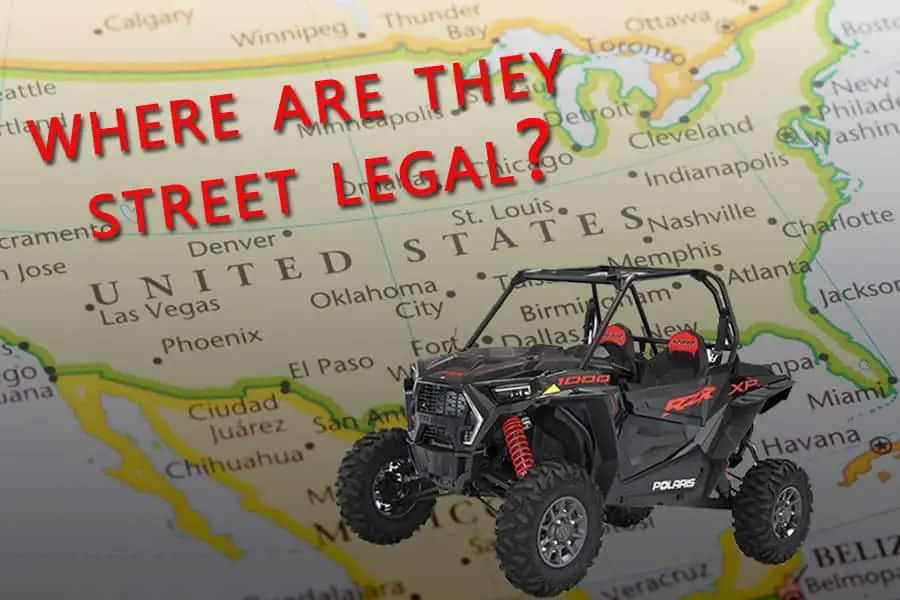

Moscow:
1st Varshavsky proezd, 2s8
+7 499 500-97-34 call me back
Yes, you can, and regardless of the size of the ATV engine. The main thing is that the ATV is equipped with the necessary set of lighting devices, and the pilot has the necessary package of documents in his hands.
You can ride both in the city and outside it, however, you need to know about some rules. For example, all ATVs are prohibited from driving on highways, in Moscow these are the Moscow Ring Road and the Third Ring Road, the exits to which are marked with special signs.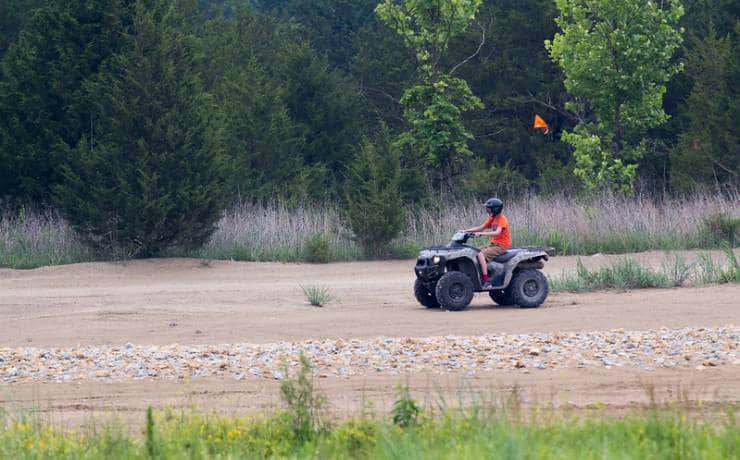 In addition, quadrics with an engine capacity exceeding 50 cubes must have a license plate and lighting equipment.
In addition, quadrics with an engine capacity exceeding 50 cubes must have a license plate and lighting equipment.
Through forests, fields, mountains and any other locations. The law restricts the movement of ATVs only in special places like nature reserves and national parks, as well as water protection zones.
First of all, you must have a PSM (self-propelled vehicle passport) in your hands, in which you are listed as the last owner. It is not necessary to bring it with you. Registration marks (number) must be installed on the ATV. It is necessary to carry STS with you. And also, you should always have a license of category A1 (tractor driver-machinist) with you.
Can't. Rights must be obtained for all quads: owners of vehicles with engines up to 50 cubes must have category “M”, which is automatically opened for owners of any other category of V / U, and pilots of more cubic capacity are required to obtain a tractor driver-driver certificate in state technical supervision.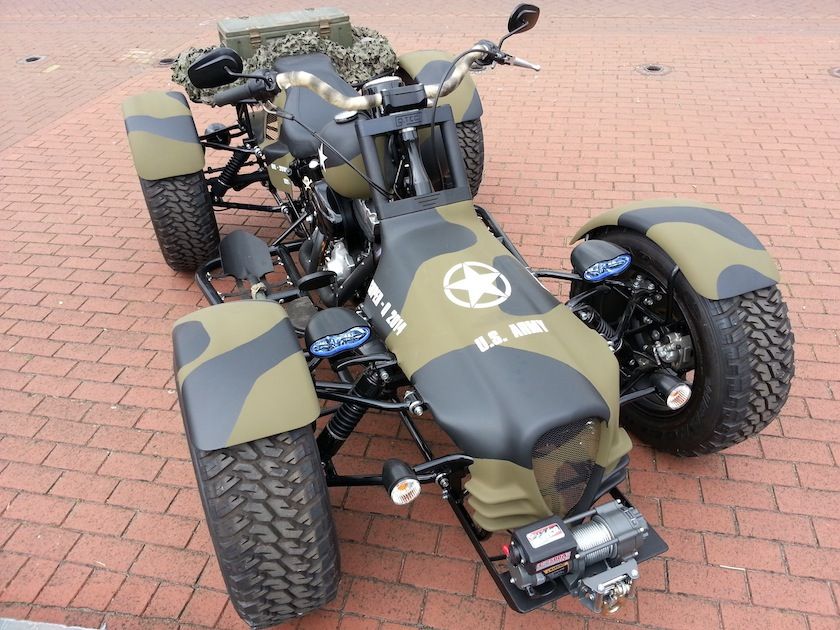 It is issued from the age of sixteen, and owners who opened category “A” in ordinary, automobile rights before 2000 can issue a category “A” tractor driver-driver's certificate without exams.
It is issued from the age of sixteen, and owners who opened category “A” in ordinary, automobile rights before 2000 can issue a category “A” tractor driver-driver's certificate without exams.
Legislation strictly regulates the age at which you can start riding an ATV, it is 16 years old. However, many parents begin to teach their children how to ride a children's ATV from the age of 6-7, for example, in their own summer cottage, where the young ATV will be completely protected from the state technical supervision and traffic police.
The law does not require ATVs to wear a helmet, nor does it impose a penalty for not wearing one. But it is better to ride in a helmet, as well as use other equipment - there is never too much safety.
Knowing the answers to these questions , and following a series of simple rules, you can completely insure yourself against any problems, and most importantly, make summer a season of only good adventures.
Choose and buy ATV can be easily found on the pages of our motorcycle catalog - HERE
Get maximum positive impressions from summer! Be active!
It is generally accepted that ATVs are driven only in mud and off-road. But there are situations when you need to drive it onto a public road (DOP). For example, to get fishing in the shortest way or to bring building materials from the store. In these cases, it is not illegal to drive the ATV on highways if several conditions are met. Let's take a look at them.

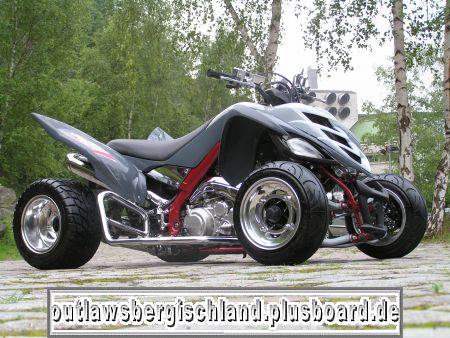
A quad bike with mud tires can comfortably ride on asphalt at speeds up to 60 km/h.